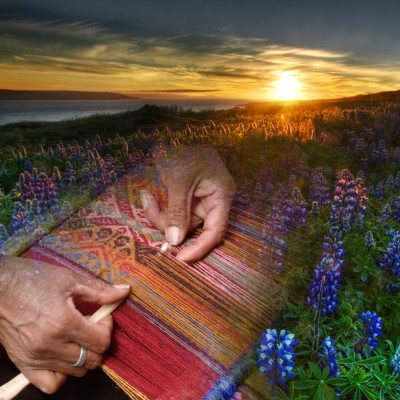Indigenous Foods & Fibers
Director
Fausto O. Sarmiento, Professor, Department of Geography
Description
The Willson Center Research Cluster on Indigenous Foods and Fibers seeks to understand the underpinnings of current narratives on indigenous environmental conservation. The core members consist of a group of faculty from diverse units on campus that trust scientific and humanistic endeavors should go hand in hand in a liberal arts formation of UGA’s students. Cluster members’ scholarly efforts will make bridging of the sciences and the humanities possible. By doing this, not only will the cluster contribute with multidisciplinary approaches to campus activities, but also energize campus-wide units in the overarching themes of the Institute of Native American Studies (INAS), the Latin American and Caribbean Studies Institute (LACSI) and the Center for Integrative Conservation Research (CICR).
The research cluster premises rely on the trope of food as identity marker and cultural affirmation of indigenous people amidst the pressures of globalization. At present, there is little acceptance of Western societies about the use of domesticated species selected by ancestral cultures from wild relatives. Historically, just a few crops were soon assimilated after the ‘Encounter’, as to become emblematic of European cultures —like Bell Pepper in France, Potato in Ireland, Chocolate in Belgium, Frijol in Spain or Tomato in Italy. On the other hand, despite being significantly more nutritious or tasty —like Quinoa, Lulu, Chamburu or Tarwi— other cultivars from the Tropical Andes were not popularized in the West. The United Nations’ International Year of Quinoa (IYQ) in 2013 is an example of the need to highlight this trend of popularizing ancestral staples. Thus, the Indigenous Foods and Fibers cluster will engage in research to contribute to a better understanding of the spatialities of indigenous foods and fibers in Georgia, the USA and the hemisphere.
Core Cluster Members
- Leara Rhodes, Associate Professor, Grady College of Journalism & Mass Communication
- James Reap, Associate Professor, College of Environment & Design, Historic Preservation
- Dory Franklin, Associate Professor, College of Agricultural & Enviromental Sciences, Crop and Soil Sciences
- Luke Naeher, Associate Professor, College of Public Health, Environmental Health Science
- Susana Ferreira, Associate Professor, College of Agricultural & Environmental Sciences, Agricultural and Applied Economics, Environmental Economics
- Cari Goetcheus, Associate Professor, College of Environment & Design, Landscape Design
- Eric MacDonald, Associate Professor, College of Environment & Design, Landscape Design
- Virginia Nazarea, Professor, Department of Anthropology
- John Schelhas, Adjunct Assistant Professor, Warnell School of Forestry & Natural Resources
- Sarah Hitchner, Assistant Research Scientist, Institute for Behavioral Research, Center for Integrative Conservation Research
- Maria Navarro, Associate Professor, College of Agricultural & Environmental Sciences, Agricultural Education
- Bynum Boley, Assistant Professor, Warnell School of Forestry & Natural Resources
Cluster Affiliates
- Neotropical Montology Collaboratory, Geography Department
- Cultural Landscapes Laboratory, Environmental Design
- Laboratory of Ethnoecology, Anthropology
- Institute of Native American Studies
- Latin American and Caribbean Studies Institute
- Center for Integrated Conservation Research

